Conditions with Japan are the most interesting thanks to the high number of Topbanders regularly active in a well limited area. The path is an high latitude one, 9.000 km long with all lousy ground reflections, and influenced by the geomagnetic activity. My rating here varies from a minimum of 20 for only a marginal QSO with a big station, to a maximum of 50 for a pile-up of new stations of the second or third layer. See graph explanations on this page.
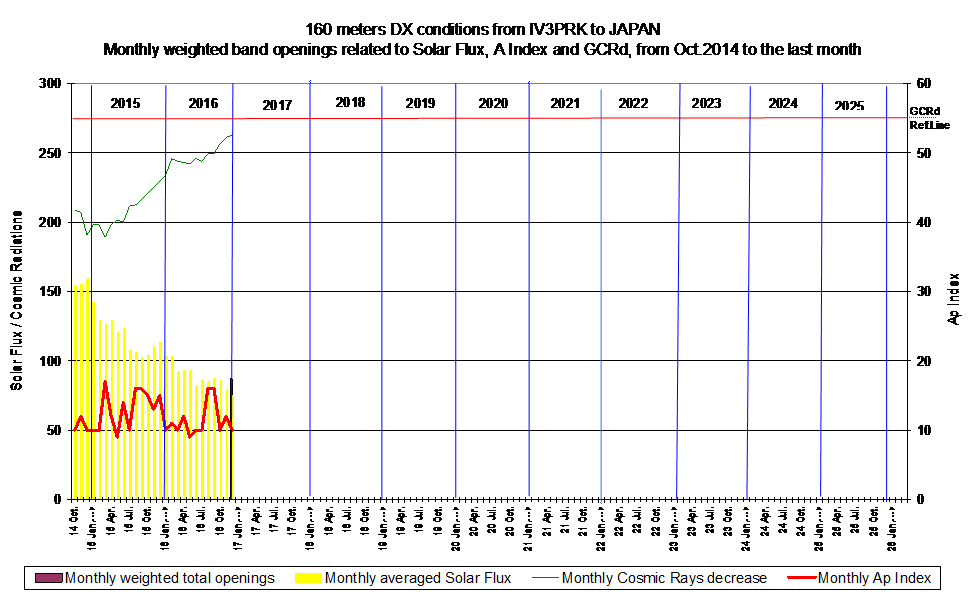
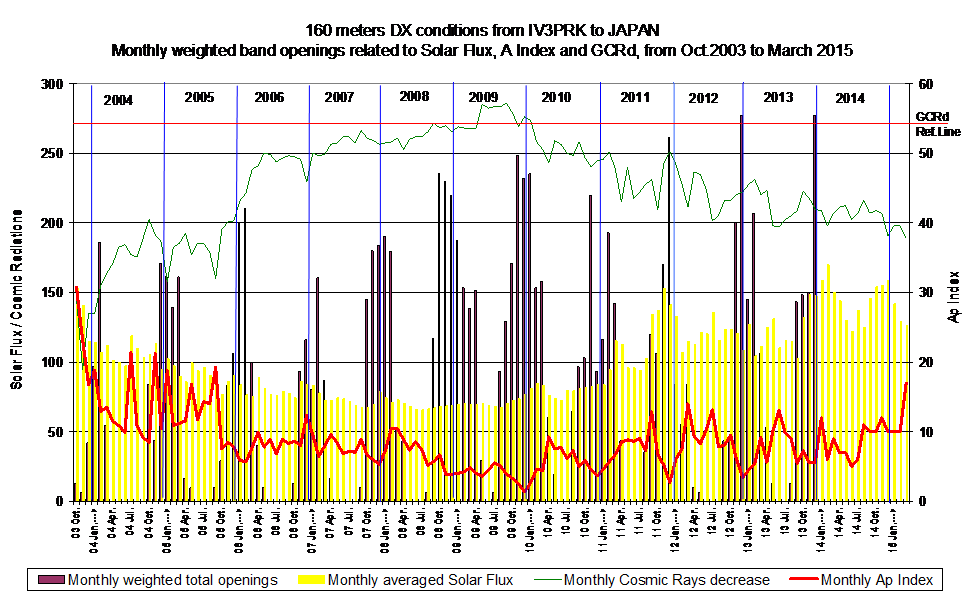
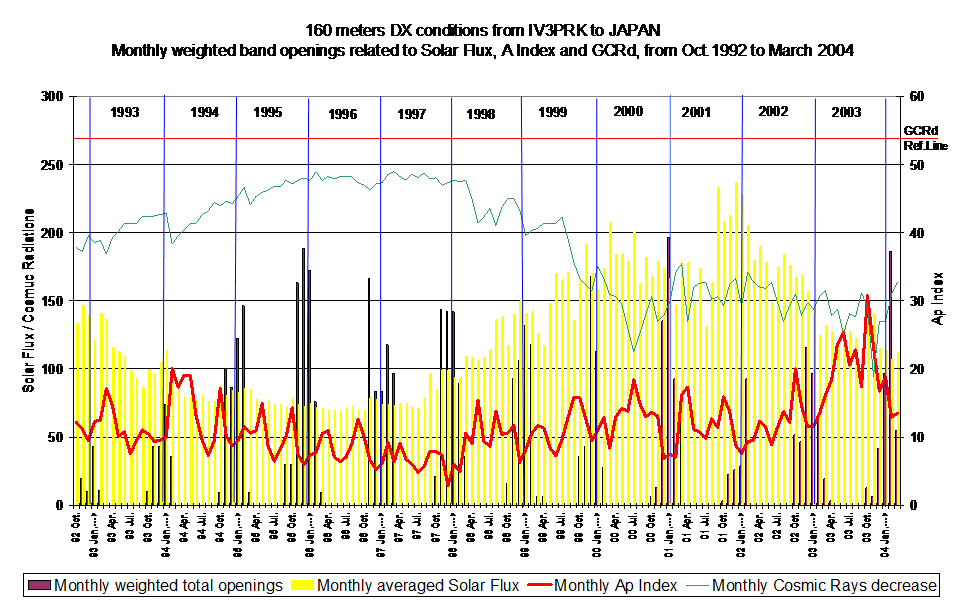
The same data grouped in a quarterly graph gives a better representation of propagation through the solar cycles.
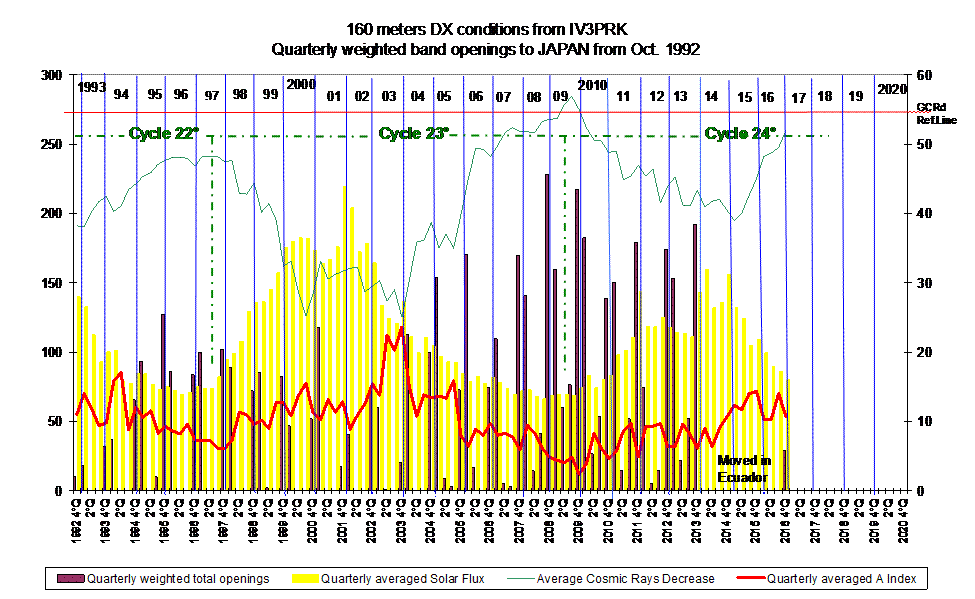
The following graphs are extracted from a data base with the peaking time of the opening and the sunrise in Japan: see here.
The behaviour of these graphs is amazing: are the solar minimum conditions exceptionally favouring this path, or is 160 m. activity in Japan growing with such a trend and becoming more and more popular ?
It looks like that, as far as Japan is concerned, the present solar minimum is much better than the previous one … quite opposite to what happens on the path to the West Coast of United States! See here for comparison.
Only one time for each day (and one row) is recorded and thus here are counted the number of days with a path opening; weak or strong, no difference.

The following are graphs showing the real number of QSO’s:
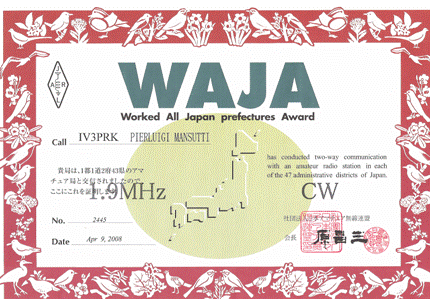

I am not an award chaser but for the very difficult ones,
so I applied for the WAJA with 160 m. endorsement.
Getting all the 47 Japanese Prefectures confirmed
is not that easy from Europe!
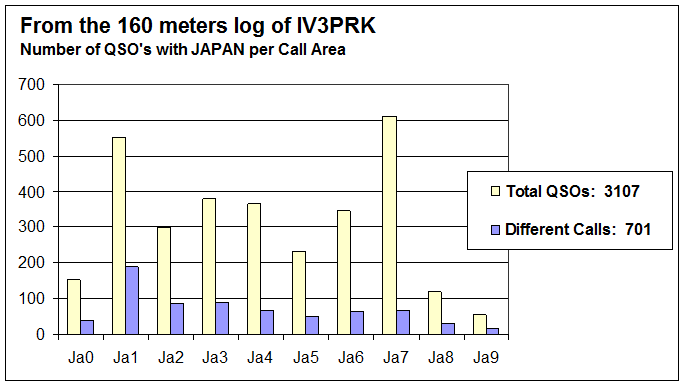
The highest column for JA7 call area is due to the great number of contacts with JA7NI (144 in 20 years), lately overtaken by JH7PFD (183 QSO’s). Thanks to Kin-san for his regular contribution to this path propagation test !
